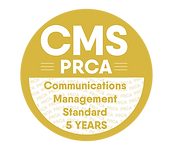Private Member’s Bills: how do they work and what can they achieve?
14 October 2016 - by Jonathan FinlayIn recent weeks, the sheer volume of proposals for Private Member’s Bills has led the Speaker of the Northern Ireland Assembly to announce a temporary moratorium. This has caused a stir, but what are Private Member’s Bills anyway?
What exactly is a Private Member’s Bill?
A Private Member’s Bill (PMB) is a Bill (that is, a draft law) which is brought before the Assembly by a Member of the House who is not a Minister. That means it is not necessarily an Executive policy and has not been prepared by a specific Department.
Why have there been so many PMBs recently?
Since the beginning of the current mandate in May, 19 proposals for PMBs have been accepted by the Speaker, at which point he has imposed a temporary suspension on accepting any more; by comparison, in the whole five-year span of the last mandate, only 25 PMBs were proposed.
As the Speaker himself noted in his letter to MLAs, the increase reflects the maturing of our political institutions, and the appetite for MLAs themselves to create their own piece of legislation. Of course, this mandate is different from those that have gone before. The Assembly now has an Official Opposition, who will be eager to put forward practical alternatives to government policy through Private Member’s legislation.
Can only MLAs from Executive parties introduce a PMB?
Not at all. PMBs offer an opportunity for MLAs from smaller parties, as well as those standing independently, to instigate the legislative process. Indeed, some of the most high-profile successful PMBs came from Members who usually stand alone in the Assembly chamber.
What sort of issues do PMBs deal with?
In recent years, successful PMBs have combated human trafficking, established a duty among Departments to work together for the well-being of children, and even created the Official Opposition itself.
Is the process for a PMB any different?
The Standing Orders which govern the Assembly make no distinction between Public Bills introduced by Ministers and those brought by Members, and the technical procedure once introduced to the Assembly is identical.
In practice, a great deal of work must precede the introduction of a PMB. The Member is expected to have consulted on the proposed Bill, and to be able to demonstrate that legislation would be the most appropriate course of action. The time between the initial proposal to the Bill Office and formal submission to the Speaker cannot exceed one year.
What support is available for an MLA bringing a PMB?
A Member wishing to introduce a PMB discusses their idea with the Bill Clerk, who offers expert advice throughout the initial proposal period. The Assembly’s Research Office and Legal Services unit can also provide vital research and information. Once a proposal is finalised, the Bill Office will refer the potential PMB to professional legislative drafters, who will transform it into a formal Bill. Whilst the process for Executive legislation is the same, the considerable resource available to Ministers through their department is clearly of benefit to them in developing a Bill.
What chance does a PMBs have of becoming law?
Out of 25 PMBs introduced to the Assembly in the last mandate, 7 ended up as law. An MLA’s chances of successfully effecting legislative change are therefore to be reckoned with! Even if a Bill fails to complete its passage through the Assembly, it can still play a key role in publicising an issue and stimulating debate, both within plenary and committee sessions, as well as in wider society.








